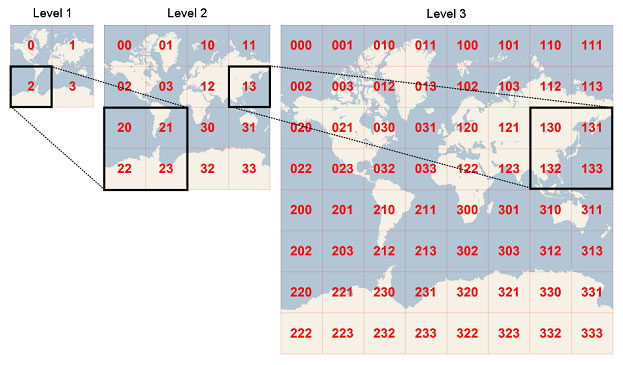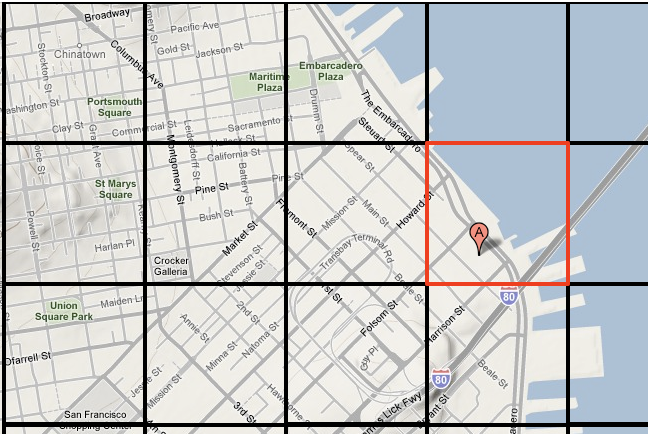What is Geohashing? | PubNub
0 MIN READ
Geohashing (or geohash) is a geocoding method used to encode geographic coordinates (latitude and longitude) into a short string of digits and letters delineating an area on a map, which is called a cell, with varying resolutions. The more characters in the string, the more precise the location. What is an example of a geohash? Geohash is a public domain of encoding coordinates. An example of a geohash is the coordinate pair 28.6132,77.2291 being converted into a geohash of ttnfv2u. What is the maximum length of a geohash? The maximum length of a geohash is 12.
 The precision factor determines the size of the cell. For instance, a precision factor of one creates a cell 5,000km high and 5,000km wide, a precision factor of six creates a cell 0.61km high and 1.22km wide, and a precision factor of nine creates a cell 4.77m high and 4.77m wide (cells are not always square).
The precision factor determines the size of the cell. For instance, a precision factor of one creates a cell 5,000km high and 5,000km wide, a precision factor of six creates a cell 0.61km high and 1.22km wide, and a precision factor of nine creates a cell 4.77m high and 4.77m wide (cells are not always square).

How Does Geohashing Work?
Geohash algorithm and calculation Geohashes use Base-32 alphabet encoding (characters can be 0 to 9 and A to Z, excl "A", "I", "L" and "O”). Imagine the world is divided into a grid with 32 cells. The first character in a geohash identifies the initial location as one of the 32 cells. This cell will also contain 32 cells, and each one of these will contain 32 cells (and so on repeatedly). Adding characters to the geohash sub-divides a cell, effectively zooming in to a more detailed area. The precision factor determines the size of the cell. For instance, a precision factor of one creates a cell 5,000km high and 5,000km wide, a precision factor of six creates a cell 0.61km high and 1.22km wide, and a precision factor of nine creates a cell 4.77m high and 4.77m wide (cells are not always square).
The precision factor determines the size of the cell. For instance, a precision factor of one creates a cell 5,000km high and 5,000km wide, a precision factor of six creates a cell 0.61km high and 1.22km wide, and a precision factor of nine creates a cell 4.77m high and 4.77m wide (cells are not always square).

Geohashing Examples and Use Cases
Geohashing was originally developed as a URL-shortening service but it is now commonly used for spatial indexing (or spatial binning), location searching, mashups and creating unique place identifiers. Geohash benefits A geohash is shorter than a regular address, or latitude and longitude coordinates, and therefore easier to share, remember and store.- Social Networking - Chat with people near you within a particular cell, and to create chat apps.
- Proximity Searches – Find nearby locations using API mapping or geolocation APIs and identify places of interest, restaurants, shops and accommodation establishments in an area.
- Digital Travels – Geohashers go on global expeditions to meet people and explore new places. The twist: the destination is a computer-generated geohash and participants in this turnkey travel experience have to write up and post their story on the internet.
- Custom Interactive Apps - Geohashing can be used to create real-time, interactive apps.